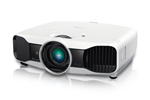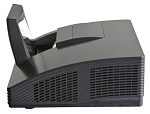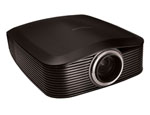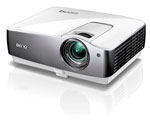Introduction to Projector Reviews
A 65-inch HDTV is fine but when you want a jumbo-screen experience, a projector is the only way to go. Some of them will throw an image up to 300-inches diagonal creating entertainment that can be shared with friends and family. Projectors come in three major types – LCD, LCoS and DLP. Some models now offer HDR and Ultra HD resolution and most have 3D capability. Enthusiasts looking for long service life will want to check out LED and laser-equipped versions. We don’t discriminate based on size or price. Many portable projectors are small enough to toss in a bag and travel with. And don’t think you have to spend a fortune. We’ve seen some that deliver the goods for less than the price of a flat panel TV.
Our tests rank image quality based on standards used in the broadcast industry and directly related to what you’ll see on the screen. If a display can be used right out of the box without calibration, we’ll tell you that too. Either way, our coverage will show you how to select the best projector for your theater and how to install it for optimal performance.
















